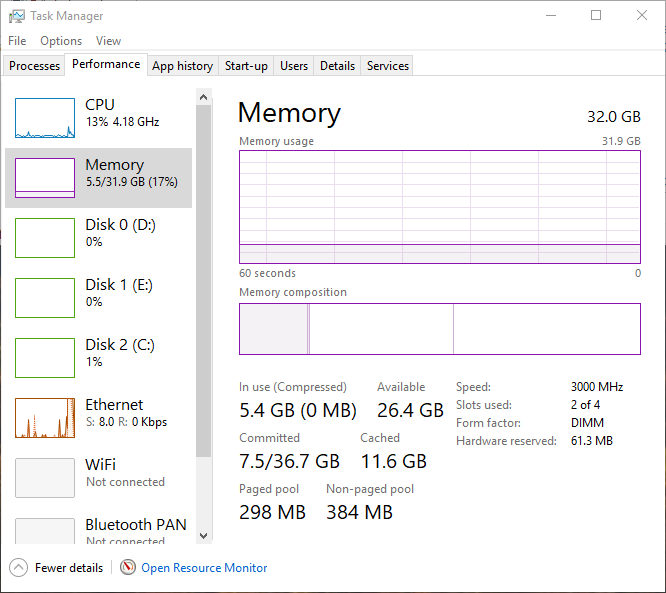

- #Does ram improve my startup time install
- #Does ram improve my startup time windows 10
- #Does ram improve my startup time software
- #Does ram improve my startup time Pc
#Does ram improve my startup time Pc
When you enter a Zwift map, your PC looks for the map data in RAM first. Your SSD and HDD drives, on the other hand, retain their information even when the computer is off. RAM is erased when your computer turns off. So when your computer needs to use data stored on a drive, it will read it from the drive and place it into RAM, where it can be accessed quickly. Your disk drives are “slower” storage – that is, it takes longer to read data from a drive than it does from your system memory (aka “RAM”). This is interesting, especially if you’re new to understanding how computers work. Hard Disk Drive – Restarting Zwift Load to Pairing Screen Here are those load times: Solid State Drive – Restarting Zwift Load to Pairing Screen (We’ll get into that below.)Īfter running some initial tests on each drive, I also closed Zwift and booted into it again, to see if it was faster since some or all of the data would already be loaded into my system memory (RAM). But I think that’s because my HDD is fairly fast and not fragmented. I was actually surprised there wasn’t more of a difference between the SSD and HDD load times. That data is found and read faster on the SSD than the HDD: 30-33% faster when loading large maps like Watopia and Makuri Islands. In order to load Zwift and its particular maps, my computer has to find the data stored on the drive and load it into memory. You can see the SSD outperforms the HDD in every test, which isn’t surprising.
#Does ram improve my startup time install
Hard Disk Drive – Fresh Install and Loading Into Zwift Zwift Install Here are the average times over multiple tests: Solid State Drive – Fresh Install and Loading Into Zwift Zwift Install
#Does ram improve my startup time windows 10
OS: Microsoft Windows 10 Home (64-Bit Edition).I ran some Zwift load time tests on my office PC, which has the following specs: Many PCs now ship with a smaller SSD for storing the operating system and program files, and a larger HDD for long-term file storage. HDDs are still cheaper when you’re talking about larger drives (2 terabytes and up), but SSDs are very affordable nowadays ( here’s a great one I’ve used: 500GB for $50). Non-mechanical (therefore less prone to failure).Shock-resistant (important for laptops which may get dropped).HDDs were the standard way computers stored data for many years, but as SSDs have dropped in price, they’ve begun replacing many spinning HDDs because SSDs have the following advantages:

It stores data on chips, basically working like the “thumb drives” we’re all familiar with. A solid state drive, in contrast, has no moving parts. Let’s get going! Primer: HDD vs SSD Hard Disc Drive internals Solid State Drive internalsĪ hard disk drive is made up of spinning platters (the “hard disks”) containing data that is read (and written) using moving arms with a read/write head on the end. We’ll also talk a bit about the importance of disk defragging and RAM in the speed equation. Today, I want to look at typical load times for Zwift on a PC with a hard disk drive (HDD) vs a solid state drive (SSD). Secondly, the speed of your PC is a major factor in how quickly Zwift will load.)

#Does ram improve my startup time software
First, complex PC games often take 30-60 seconds to load, but if you’re used to just loading basic software like Microsoft Word or your web browser, you may think Zwift loads quite slowly. Typically, if I do a bit of digging, I’ll learn that this Zwifter is not a PC gamer, and often on an older machine. One comment I often see from PC-based Zwifters is that Zwift loads too slowly.


 0 kommentar(er)
0 kommentar(er)
